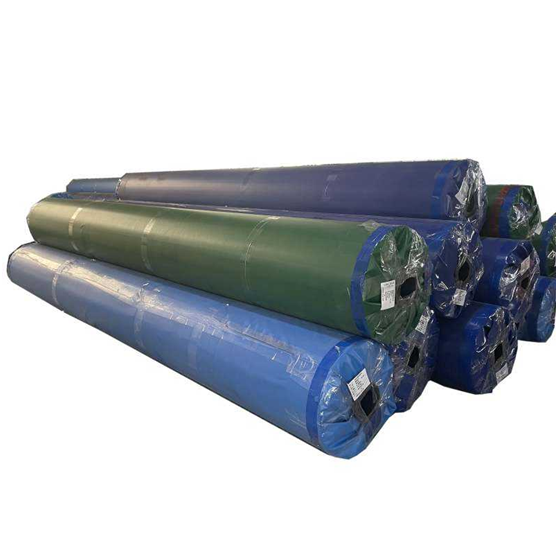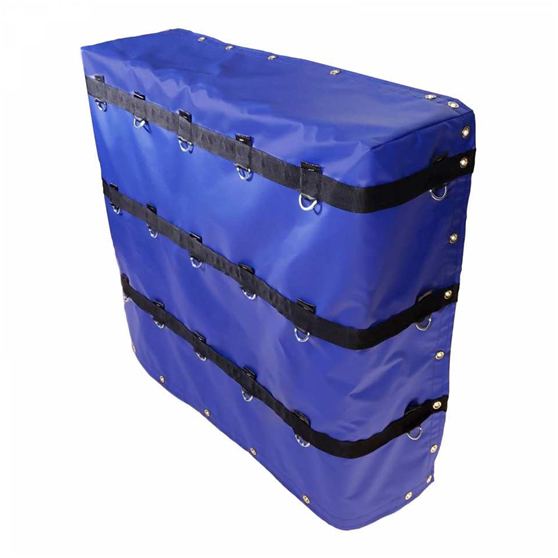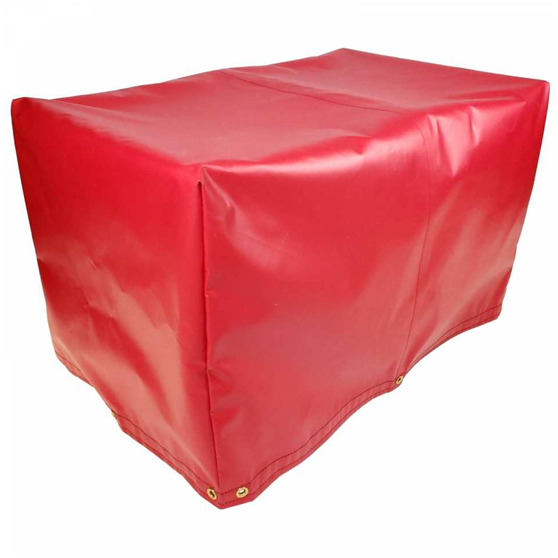


Smoke cloth is a fire-resistant fabric designed to cover structures during wildfires. It is used to prevent smoldering debris and embers from igniting or entering buildings and other structures. Smoke tarps are typically constructed of heavy-duty materials such as woven fiberglass, silicon-coated fabric, or aluminum foil fabric, and are secured to the structure using strong metal grommets and tie-down cords.
Material:
The tarpaulin is made of flame retardant material for safety. The exact materials used may vary by manufacturer and intended application. Common materials for tarpaulins include:
1. PVC (Polyvinyl Chloride): PVC Smoke Tarps are durable, flexible and not easy to tear. They can withstand high temperatures and have good resistance to chemicals and UV rays.
2. Vinyl-Coated Polyester: Vinyl-coated polyester fabric is another common material used for tarpaulins. This combination provides strength, flexibility and abrasion resistance.
3. Fireproof fabrics: Some smoke-proof cloths are made of special fireproof fabrics, which can withstand high temperature and flame. These fabrics are often chemically treated to enhance their flame-retardant properties.
It is important to note that the specific materials used for tarpaulins may also depend on any relevant safety regulations or standards in the industry or region in which they are used. It is always advisable to check with the manufacturer or supplier for specific material details and certifications.
Features:
1. Fireproof material: Smoke-proof tarpaulin is made of materials that are not easy to catch fire such as flame-retardant fabrics or fire-resistant coatings.
2. Heat resistance: They are designed to withstand high temperatures without deformation or melting, making them suitable for use under high temperature and fire conditions.
3. Smoke Control: Smoke Control Tarps are specifically designed to control and manage smoke. They are designed to prevent the spread of smoke so that it can be channeled or contained within a specific area.
4. Durability: Smoke tarps are made of strong and durable material that can withstand harsh conditions and repeated use. They are often reinforced with additional stitching or reinforced edges to give them strength.
5. Versatility: Tarpaulins come in a variety of sizes and shapes to suit different applications. They can be customized according to the needs of the user to suit a particular area or situation.
6. Easy to set up and store: They are designed for easy set up and can be quickly deployed when needed. They also fold and compact for easy storage and transport.
7. Visibility: Some smoke tarps come in high-visibility colors or have reflective strips to ensure they are easily seen, especially in low-light conditions or in emergency situations.
8. Additional Features: Depending on the manufacturer, smoke tarps may include additional features such as eyelets or grommets for easy attachment, reinforced corners for durability, or hooks and straps for secure attachment. It is important to note that the specific characteristics of smoke tarps may vary by manufacturer and intended use.
Smoke tarps are primarily used in applications where smoke control and containment is critical. Here are some common areas where a tarpaulin can be used:
1. Firefighters and Emergency Responders: Firefighters often use smoke drapes to contain and redirect smoke during firefighting operations. They can be used to create barriers or partitions to prevent the spread of smoke into unaffected areas or to protect nearby structures.
2. Industrial Operations: Industries involving high temperature processes or producing large amounts of smoke may use smoke screens to contain and direct the smoke. This helps maintain air quality, protects workers and prevents smoke from affecting adjacent areas.
3. Construction sites: In construction or demolition projects, anti-smoke tarpaulins can be used to control dust and smoke from cutting, grinding or other activities. They can help create a work area with lower smoke concentrations to improve visibility and provide a safer environment for workers.
4. Hazardous substance accidents: When dealing with hazardous substances or chemicals, smoke-proof cloth can be used to isolate and contain smoke or chemical vapor. This helps protect surrounding areas, controls the spread of potentially hazardous materials, and allows for safer mitigation and cleanup.
5. Event venues: In outdoor events such as concerts or festivals, smoke screens can be used to control smoke from food vendors or cooking areas. This helps prevent smoke from affecting attendees and improves the air quality of the event venue.
6. HVAC Systems: Smoke tarps can also be used in HVAC systems to contain and contain smoke during maintenance or repairs. This prevents smoke from entering the duct-work and spreading throughout the building, minimizing damage and maintaining air quality.
These are just a few examples of the many potential applications for smoke tarps. Ultimately, their use depends on the specific needs and circumstances of each situation.
Post time: Jun-21-2023


